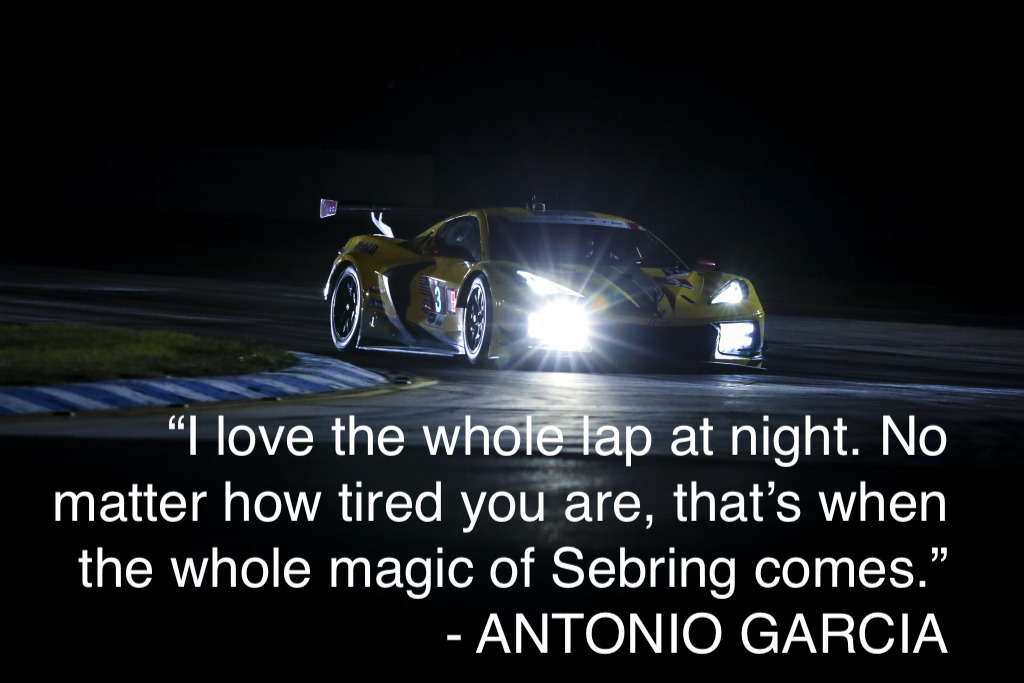We’ve all been in a love-hate relationship with something or someone. Sometimes that comes from hating part of it, but loving another aspect. Other times it’s something that makes you so miserable that you can’t help but love it. Sebring? Yeah, for many drivers, it’s like that.
Sebring International Raceway is legendary for its bumps and its surface that alternates between concrete and asphalt. During next week’s Twelve Hours of Sebring for the IMSA WeatherTech SportsCar Championship, as well as the WEC 100 Miles of Sebring the day before, there will be a time when the position of the sun entering a couple of the critical turns is almost unbearable. Then there is the darkness — darkness unlike most endurance racers encounter at any other circuit.
“It is the most unique track that we go to on the schedule at least,” explains Andy Lally, fresh off a GTD podium finish in the No. 44 Magnus Racing Aston Martin Vantage at Daytona (and pictured above at Sebring last year). “There aren’t too many places where we combine asphalt and concrete racing surfaces. In fact, I think it’s probably the only one with the exception of some places with small patches. The fact that we know there’s problems with the track and we don’t want to fix it, we know that there’s some treacherous corners and we know that there’s bumps and and cliffs and holes and stuff … that is all part of the historical value of Sebring and what it brings. As it is fairly grueling on a driver and it’s barely ever really nice weather there, that’s what makes it satisfying if you do well.”
There’s also the way the circuit changes over the course of the race — set the car up to be fast for the finish, and in the middle of the day it will be an absolute handful.
“Understanding the unique challenge of that is that the track gets good and bad at different points in the day, so and then even some of the asphalt corners get good and bad in different points in the day. So Sebring, in particular, you know your morning goodness is worn off and you’re going to the afternoon sliminess as soon as you get a little too sideways coming out of (Turn) 5, and you know, pretty much on that lap, that Turn 16 is going to start to be horrible,” says Lally, who ran his first race at Sebring in 1996. “And every bit of feedback and everything that you do for the rest of the day until about 4:30 or 5:30 p.m. is useless to make 5 and 16 good. And then gradually some of the other corners drop off; you get some corners like 11 that stays shaded with the trees there but you get a lot of different corners that progress from good to bad differently.
“The challenge is not being fooled by the temperature change during the day,” he explains. “You know, there’s other tracks around the U.S. that do this. But as far as what’s on the IMSA calendar, nothing changes like Sebring. If you drove out at 9am and threw down a lap and then left the car alone, put another set of stickers on it and drove out at noon, just three hours later, your time difference would put you from qualifying first on the grid to last on the grid. It’s such a change throughout the day. That afternoon part is just so potentially treacherous. And you can also chase something that sets you down the wrong path for the night.”

